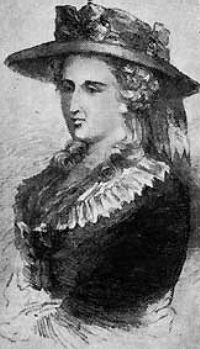More than a hundred years ago—on April 25, 1917–one of America’s greatest jazz musicians was born in Newport News, Virginia. She didn’t linger long in the South, but moved with her mother to Yonkers, N.Y., a suburb of New York City. Although she travelled widely throughout her life, her home base was New York and especially Harlem.
After her mother remarried and had more children, Ella lived a life of freedom on the streets, especially after her mother died as the result of an auto accident when Ella was fifteen. The famous Amateur Nights at the Appollo Theater in Harlem became a magnet for Ella and she developed an ambition to become a dancer.
When Ella finally got a chance to compete in the Amateur nights, an accident of scheduling led to her appearance immediately following an excellent dance presentation. Thinking fast, Ella decided to sing instead of dance for her try-out.
Her performance was a hit with the audience, so in 1934, at the age of 17, she found herself at the start of a long, successful career.
Building a career as a jazz singer was not easy, especially during the difficult years of the great depression, but Ella was determined and she learned quickly. She was a very private person, but her talent was recognized by many of the greatest jazz performers of her time and she soon found mentors to help her develop her skills and to present herself to audiences. Her energy seemed endless and her life was devoted to music. She was willing to travel and to appear in many venues and she gradually became known not only in America but in Europe.
Racial prejudice sometimes made life difficult for Ella, but she was able to overcome most of the slights that she encountered. One of her worst experiences occurred during a tour to Australia in 1954. Her baggage and that of her group were removed from their airplane in Hawaii where they were stranded for two days. Ella let none of this hardship deter her. She went on and completed the tour and was a hit.
The most recent and detailed biography of Fitzgerald is Becoming Ella Fitzgerald: The Jazz Singer Who Transformed American Song by Judith Tick (Norton 2024). Tick tells the fascinating story of how Ella continued her career during the long, difficult postwar years as she developed diabetes and endured several amputations and years of illness. She never gave up singing and appeared as often as she could until she died in 1996.
Perhaps the best way we could honor Ella today would be by listening to one of her performances. Many are available on disk and videos for today’s audiences.



